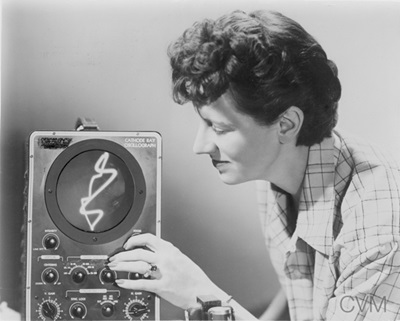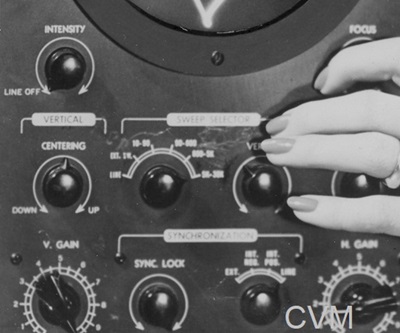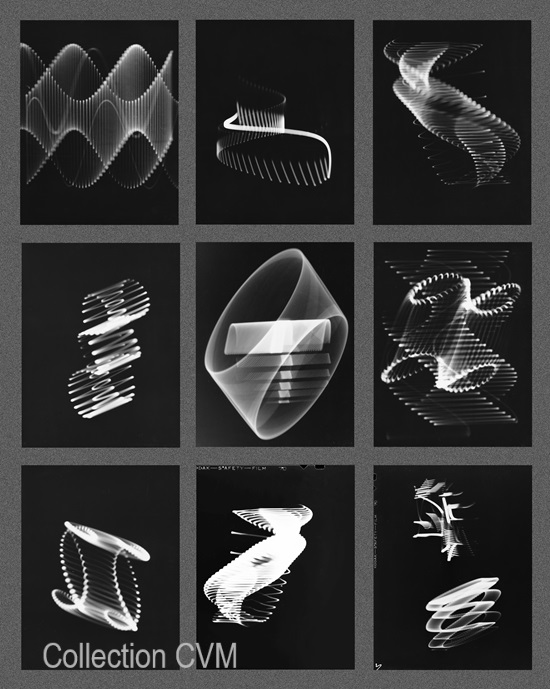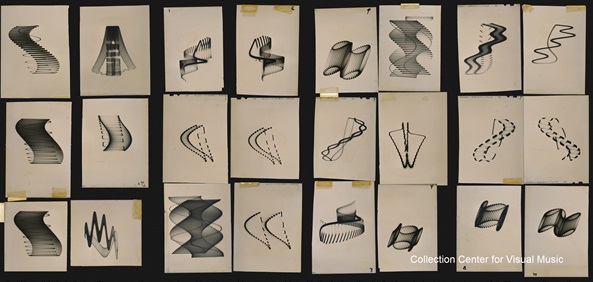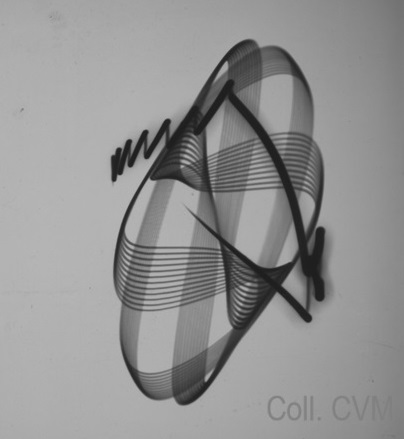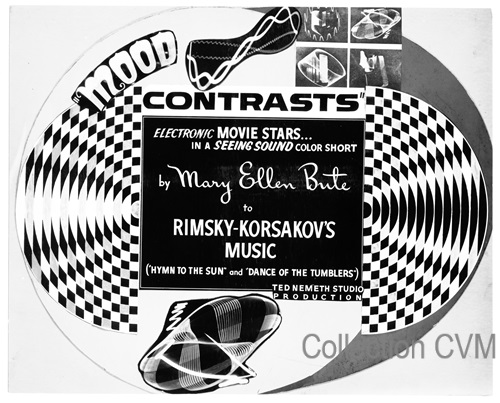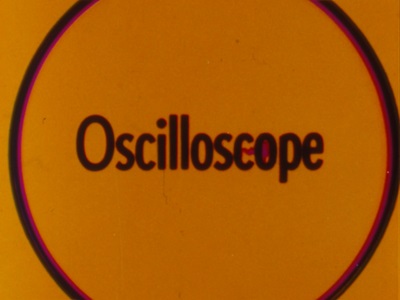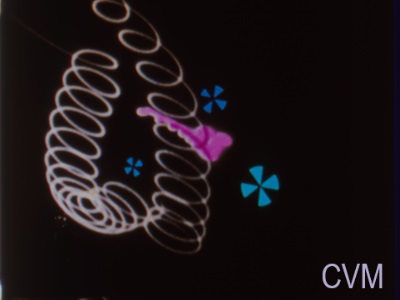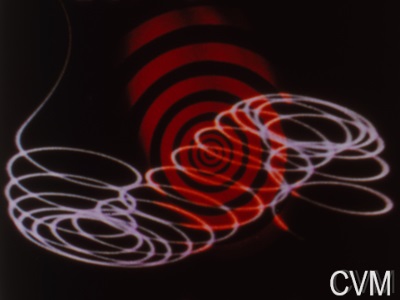(in progress)
Mary Ellen Bute observing an image on an oscilloscope screen.
"By turning knobs and switches on a control board I can 'draw' with a beam of light with as much freedom as with a brush. As the figures and forms are produced by light on the oscilloscope screen, they are photographed on motion picture film. By careful conscious repetition and experiment, I have accumulated a 'repertoire' of forms. The creative possibilities are limitless. By changing and controlling the electrical inputs in the 'scope an infinite variety of forms can be made to move in pre-deterrmined time rhythms, and be combined or altered at will." From Mary Ellen Bute, "ABSTRONICS: An Experimental Filmmaker Photographs the Esthetics of the Oscillograph" in Films in Review Vol 5. No 6 (June-July 1954). CVM Note: Bute's Oscilloscope was a Precision Series ES-500A (more detail below).
Oscilloscope images, Ted Nemeth Studio (layout by CVM):
Ted Nemeth's Lab Order: A Lexicon of Osciloscope Images
These negatives were found interleaved in a small tablet with the instruction "1 8 x 10 each double wt. glossy 12." These small negative images of light trails appear to be extracted from film clips recorded from oscilloscope screens. All of these image types appear in Bute's film Abstronic. Some of them also appear in the RCA promotional film New Sensations in Sound.
Oscillocope image, Mary Ellen Bute and Ted Nemeth, c. 1952. This image is unusual in its detail. While there is a bold black squiggle of a line 'on top' that has the look of an oscilloscopic image, the underlying ovoid mesh imager is very regular in terms of line shape and density. This fragment illustrates the type of imagery that was being derived from electronic equipment - oscillators and plotters - in the early 1950s. The image resembles the plotted results of Lissajous maths, and also the patterns produced by a spirograph. This image is roughly contemporary with the Remington-Rand plotter that was used in conjunction with the Univac computer. It also resembles the patterns that John Whitney, Sr. produced with analog computers. But the oscilloscope images produced by Bute and Nemeth are not raster-based, they are calligraphic. Although they effectively display the mathematical patterns produced by audio stimuli, they don't do it with pixels, as computed light.
Promotional Material for Mood Contrasts uses several oscilloscope images that are in Abstronic
Stills from Mood Contrasts All materials are in the Collection of CVM. Please direct questions and inquiries to Center for Visual Music email: cvmaccess (at) gmail (dot) com last modified Nov 2025 |
Want to see more? Yes, I want to help support CVM's digitization and access programs by making a donation. CVM is a non- profit 501(c) 3, donations are tax deductible to the extent allowed by law.
|
